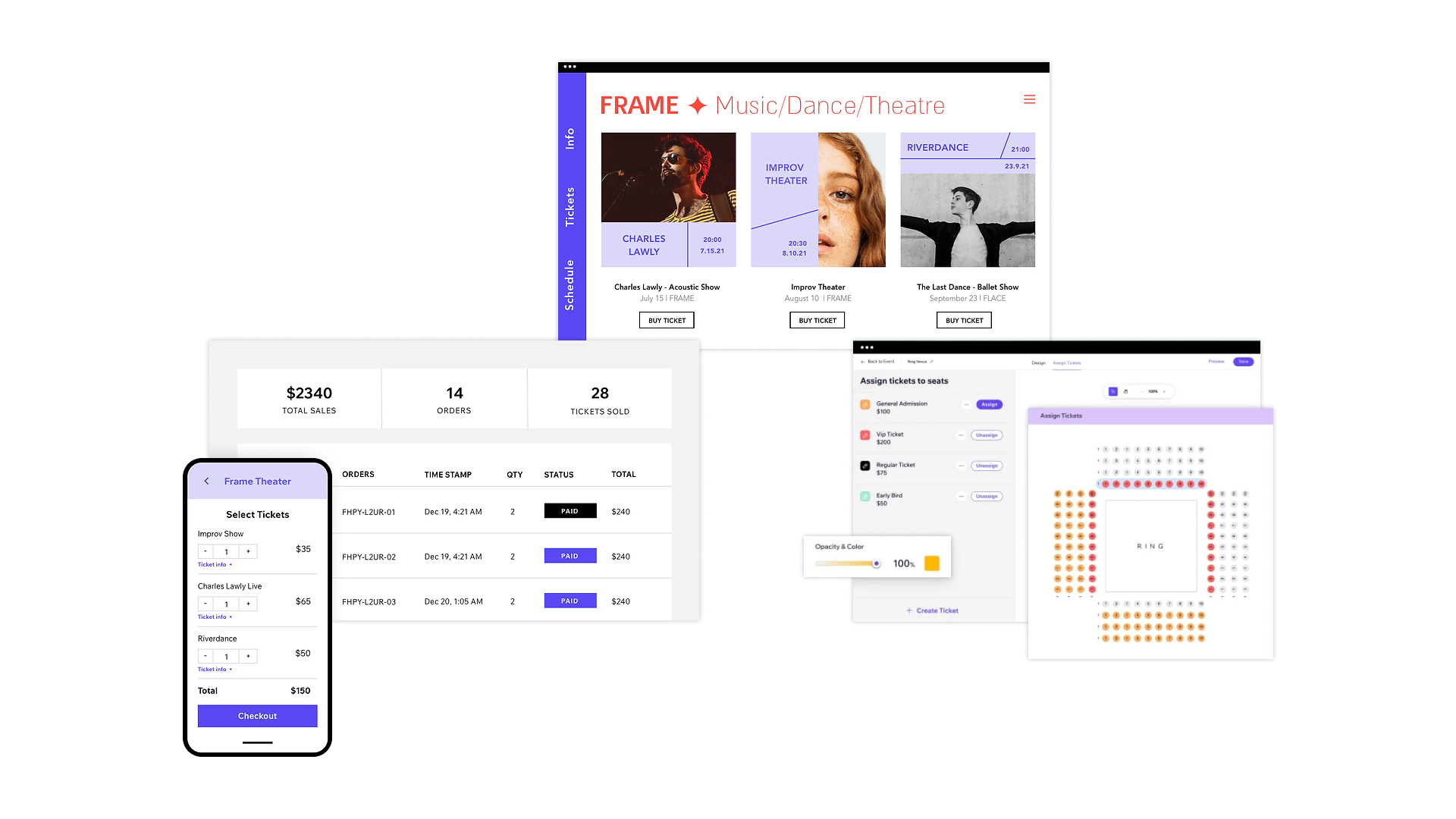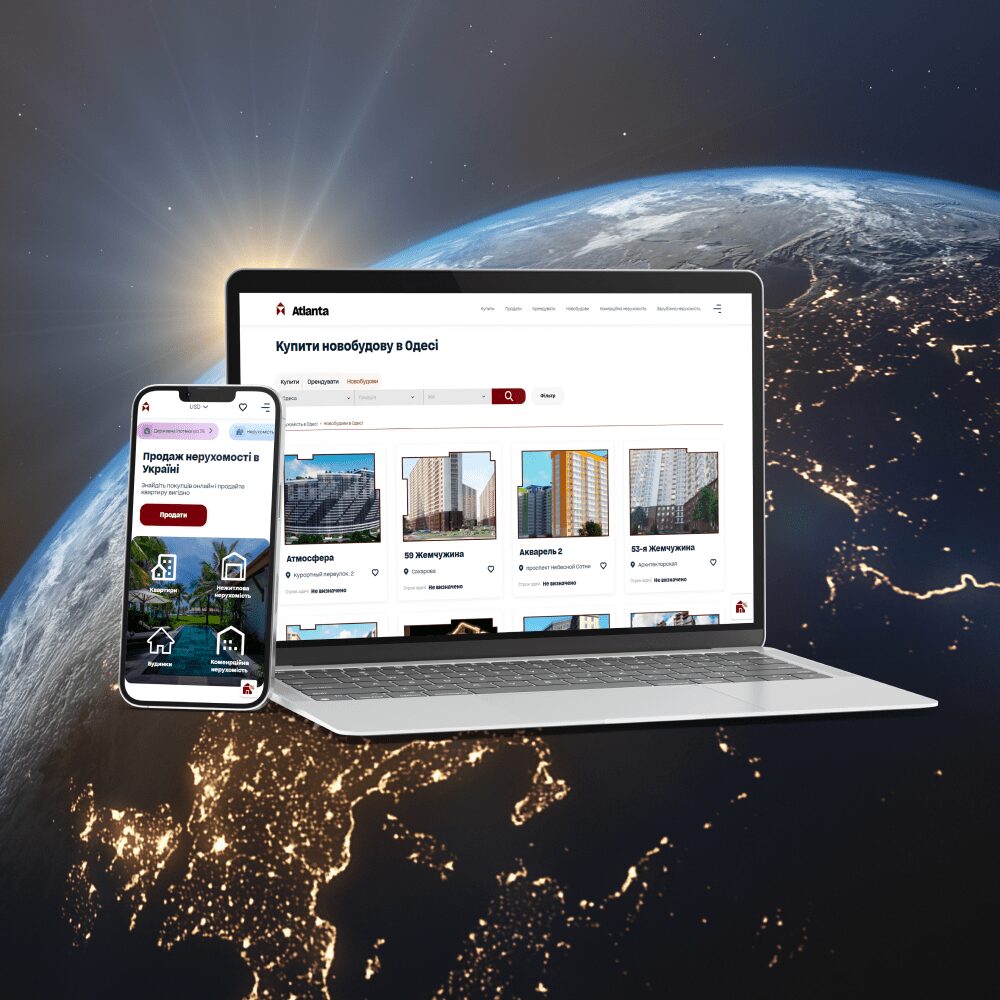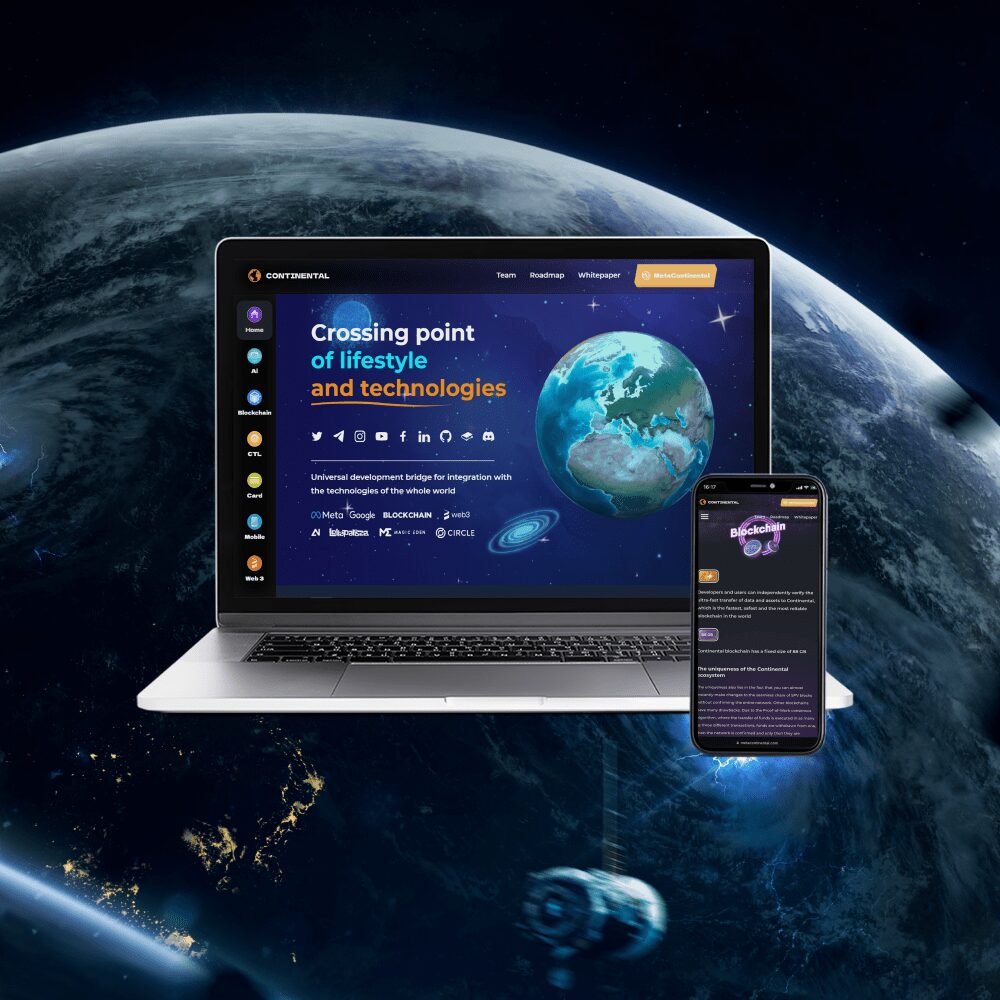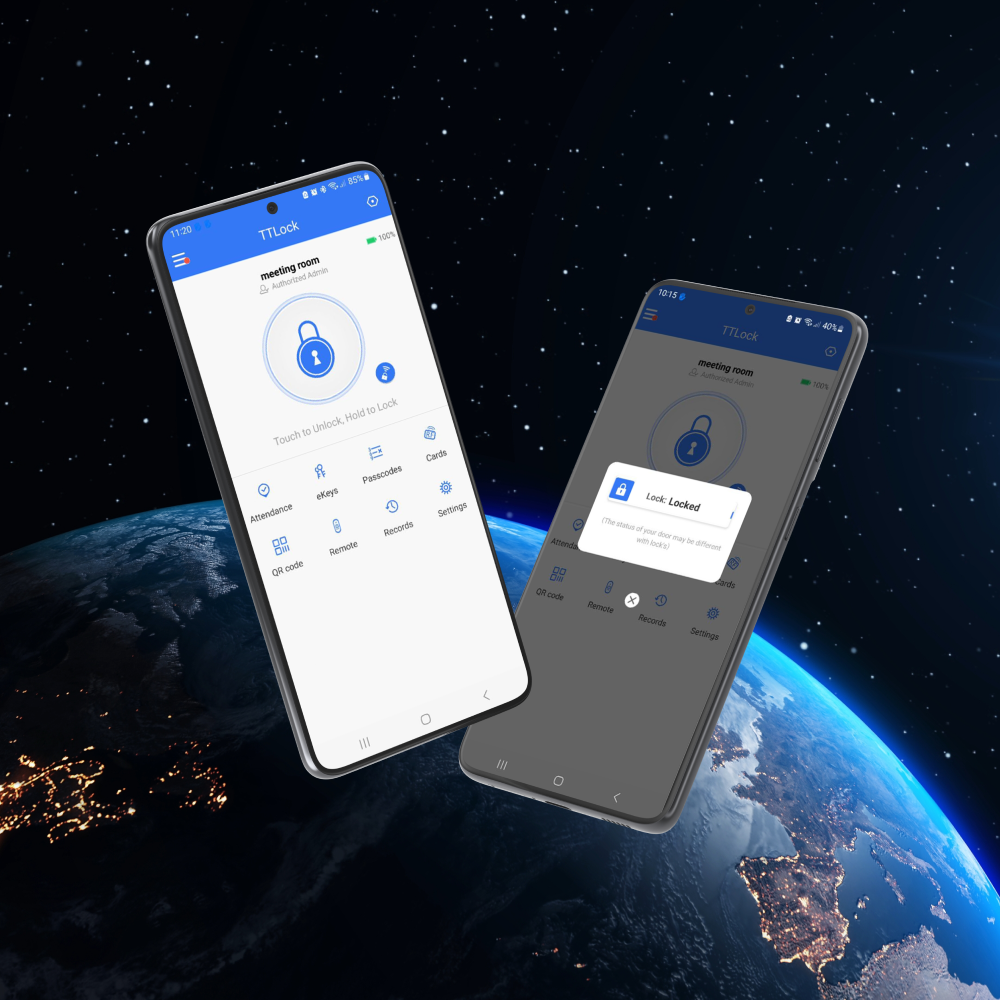What is interactive website development and how is it implemented?
What is interactive website development and how is it implemented?
Web developmentWhat is interactive website development and how is it implemented? Web development
Interactive websites have become one of the main trends in web development in recent years. And it’s not so much about aesthetics and visual appeal, but about the specific results they help businesses achieve.
According to the Content Marketing Institute, the use of interactive content increases the conversion rate of a web resource up to 2-3 times, and analysts from Forrester concluded that users who interact with interactive elements leave the site 60% less often.
This suggests that static websites are gradually shifting to the background as visitors prefer a more engaging and in-depth brand experience.
In this article, we tell you how to create an interactive website from scratch and share the technologies that our experts use in their work. You will also learn what specific benefits businesses can derive from such online resources.

Main features of the interactive site
Differences between an interactive site and a static siteMain features of the interactive site Differences between an interactive site and a static site
To begin with, an interactive website is a web resource that gives visitors the opportunity to interact with content or individual elements in real time without refreshing the page. This allows you to create a unique and memorable user experience, increases audience engagement and stimulates increased sales.
If we compare interactive resources with static resources, we can highlight a number of features that make them more adaptive and attractive to the modern user:
- Dynamic interaction. Users can instantly change the display or functionality of the page without having to reload it. This can include forms with instant data validation, tests, product configurators, and interactive interface elements that make the site more responsive and user-friendly.
- Content personalization. Interactive sites tailor the information displayed to the user’s individual preferences. Based on their actions and location, personalized recommendations, promotions or customized offers are provided, increasing audience satisfaction and loyalty.
- Real-time integration. These resources keep data up-to-date without reloading the page. Chats, interactive maps, calculators and updated news feeds create a sense of live interaction, making it easy to access relevant information.
- Use of multimedia and animation. Modern interactive sites actively implement visual effects: scrolling animation, 3D models of goods, videos and other elements that make the resource bright, memorable and exciting.
- Feedback and analytics. Interactive sites give users the opportunity to rate products, leave feedback, participate in surveys and polls. This helps businesses gather important information and improve user experience.
- Adaptation for devices. Such sites are developed with adaptive design in mind and work correctly on all devices, from smartphones to desktops, maintaining usability and attractive appearance.
- Process Automation. Interactive websites integrate with business systems to automate important operations such as online enrollment, order generation and customer data management, saving employees time and effort.

Advantages of interactive websites
Business benefitsAdvantages of interactive websites Business benefits
Developing interactive web sites gives a company several impressive benefits:
- Increased engagement. According to Demand Gen Report, interactive elements of a website can double visitor engagement rates. Accordingly, the longer users explore and interact with pages, the more their emotional connection to the brand is strengthened.
- Improved user experience. Interactive website menus, buttons, animations and other elements not only engage but also help visitors easily find the information they need. This makes navigation intuitive and simplifies the customer’s journey to taking a targeted action.
- Increased conversion. Interactive elements motivate visitors to take targeted actions (purchases, registrations).
- Strengthening brand image. Interactive sites create a sense of modernity and innovation, which has a positive impact on brand perception. The use of animations, personalized interfaces and advanced technologies inspires trust among users and demonstrates the company’s professionalism. This approach helps to stand out among competitors and win the attention of the target audience.
- Data collection. Real interaction helps to collect analytical data on user behavior.

Examples of successful interactive websites
Successful casesExamples of successful interactive websites Successful cases
Static websites are gradually becoming a thing of the past, so today you can find quite a few resources that successfully use interactivity to increase user engagement and improve customer experience. We suggest you to consider the most interesting cases, from which you can get ideas for your project:
- Spotify. Uses personalization, offering listeners playlists and recommendations based on their preferences, which increases audience loyalty and engagement.
- IKEA. Offers visitors an interactive planner with augmented reality that helps users visualize furniture in their interiors before they buy it.
- Duolingo. Employs gamification and daily goals that increase student motivation and make learning more fun.
- Ray-Ban. The brand’s website offers customers to use a virtual fitting room, and also gives the opportunity to customize glasses at their discretion: choose the color of lenses, frames and add engraving. This allows to build an individual approach to each client.
Stages of creating an interactive website
How to develop an interactive websiteStages of creating an interactive website How to develop an interactive website
Creating an interactive website usually takes several months and consists of 7 consecutive steps. Regardless of whether you develop it with your internal team or outsource it to external specialists, the process will look roughly the same:
- Analyzing tasks and setting goals.
- Designing the structure and prototyping.
- UI/UX design development.
- Client-side and server-side programming.
- Implementation of interactive elements.
- Testing and optimization.
- Launch and development of the site.
If we talk about interactive elements, they are implemented on the site in two stages. First, they are laid down and designed in the prototyping process. At this point, their functionality, location and logic of interaction with the user are determined. Integration into the final design and code occurs a little later, when the overall structure, visual concept and technical basis of the site is already formed.
This approach minimizes the risk of errors, increases the integrity of the user experience and makes the site intuitive and easy to interact with.

How to make an existing website interactive?
Steps to add interactivityHow to make an existing website interactive? Steps to add interactivity
Of course, it is possible to transform an existing website into an interactive one without having to create a new resource from scratch. However, a successful transition requires analyzing the current state of the website, careful planning and the use of modern technologies. Here are the main steps we take to realize such a task:
- Analyze the current state of the site. We evaluate the functionality of the resource, identify its weaknesses and outdated elements, identify technical limitations that may hinder the integration of interactive technologies.
- Collect data from analytics and user feedback. We study visitors’ behavior on the site and their preferences to understand what features and improvements will be most needed.
- Identify appropriate interactive elements. Based on the analysis, we propose the implementation of optimal interactive solutions. For example, it can be animations to improve visual perception, configurators to customize products and services, or other elements.
- We perform technical development. We draw and program interactive elements using modern technologies, and then integrate them into the client’s site.
- Optimize performance. We improve site loading speed taking into account added features: minimize code, apply CDN, test on different devices and browsers.
- Conduct testing. We make sure that all added elements work correctly on all popular platforms, including desktops, tablets and smartphones.
- Provide support and updates. Once interactive features are implemented, we continue to analyze their effectiveness, collect user feedback, and make regular improvements.

Examples of interactive enhancements
What interactive elements can we add to a website?Examples of interactive enhancements What interactive elements can we add to a website?
To get inspired by the possibilities of interactivity we suggest you consider what interactive options we can integrate into your website:
- Animations. Effects of text or images appearing when scrolling the page, changing the behavior of elements when clicking or hovering the cursor, etc.
- 2D and 3D configurators. For customizing products or services, such as choosing colors, sizes or other parameters, which simplifies the buying process and improves user experience.
- Chatbots. For example, it can be an online consultant via Telegram or WhatsApp.
- Creation of a personal cabinet. To manage orders, services and personal data.
- Interactive data visualization. Dynamic graphs, maps or calendars.
- Connection of a recommendation system. Personalized content based on user behavior.

What technologies are used to add interactivity to a website
Technologies and ToolsWhat technologies are used to add interactivity to a website Technologies and Tools
As we said, to add interactivity to a website you need modern technologies that provide high performance, visual appeal and user-friendliness. For example, let’s take a look at what tools AVADA MEDIA experts use in their work:
- React.js and Vue.js – for creating interactive user interfaces with fast response to actions.
- CSS3 – for basic animations and hover effects that create visual appeal.
- GSAP – for developing smooth and complex animations with minimal load on the site.
- WebGL and Three.js – for creating 3D graphics and interactive visualizations.
- Leaflet and Mapbox – for developing interactive maps and visualizing geodata.
- D3.js – for displaying data as graphs, charts, and other dynamic visual elements.
- APIs and integrations – for automating business processes through interactivity, e.g. with chatbots, CRM systems or other solutions.
Заключение
Интерактивные сайты стали важным инструментом для компаний, которые стремятся выделиться на рынке и создать прочную связь со своей аудиторией. Они предлагают посетителям не просто возможность просмотра страниц, а формируют увлекательный опыт, который делает взаимодействие с брендом более интересным, запоминающимся и эффективным. В результате, внедрение интерактива позволяет бизнесу повысить конверсию и продажи, укрепить лояльность клиентов и способствует улучшению позиций ресурса в поисковой выдаче.
В компании AVADA MEDIA мы обладаем опытом и экспертизой для создания современных интерактивных веб-сайтов, адаптированных под уникальные потребности вашего бизнеса. От концепции до запуска — наши специалисты помогут на каждом этапе воплотить ваши идеи в жизнь и обеспечат безупречное качество результата.
Заполните форму и приступим к обсуждению вашего проекта!
Fresh works
We create space projectsFresh works
The best confirmation of our qualifications and professionalism are the stories of the success of our clients and the differences in their business before and after working with us.
Our clients
What they say about usOur clients What they say about us
Successful projects are created only by the team
Our teamSuccessful projects
are created only by the team Our team












Contact the experts
Have a question?Contact the experts Have a question?
-
Phone:+ 38 (097) 036 29 32
-
E-mail:info@avada-media.com.ua















